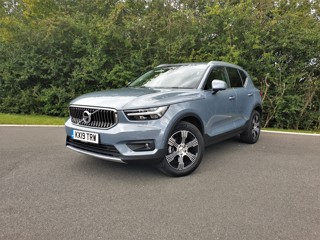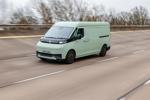Review
It might seem crazy that Jaguar enables its customers to spec up an E-Pace to cost more than £50,000, but the British manufacturer isn’t alone as all the premium brands are looking to cash in on the lucrative small SUV segment by offering vast levels of customisation and engine options to suit all budgets.
We’ve decided to check out the E-Pace in its most basic form, costing just under £30,000 the D150 comes with front wheel drive and a manual gearbox – making it more suitable for fleet use.
It’s the lightest and most efficient E-Pace available, although emissions of 143g/km of CO2 are hardly competitive against rivals that manage to dip under the 130g/km benchmark.
Jaguar has boosted the standard specification of the E-Pace so all models now get LED headlights, heated front seats and a reversing camera.
The S model gets leather, sat-nav and folding door mirrors for an extra £2,000, which should be more than enough to satisfy most company car drivers.
Powering the D150 is a 2.0-litre 150PS diesel engine, it’s the same one that’s found in most JLR products and is also offered in 180PS guise.
Fuel economy is rated at 42mpg, we managed high 30s during our testing although one journey netted a 45mpg reading on the trip computer.
Rival cars such as the Audi Q3, BMW X1 and Volvo XC60 offer lower emissions with similar power outputs, putting the Jag on the back foot. It doesn’t make a massive difference to company car tax though, with differences between models of around £30 per month (20% taxpayer).
Driveability is a strong point for the E-Pace. It’s a fairly heavy car and therefore feels planted and stable. There is little body roll despite the car's extra height.
The extra weight is noticeable when accelerating though, the D150 feels a little lethargic and needs to be worked hard to really get going, which burns more fuel. Once cruising there is little to fault.
Cabin noise is well insulated and covering miles in the E-Pace is no hardship.
From a practicality perspective, the E-Pace is slightly behind rivals with a 425-litre boot. As there is no XE estate, it ticks the box in Jaguar’s range for a more practical car in this price range.
Passenger space is fairly generous and overall cabin feel is positive. There are a few cheaper feeling plastics, but the main touchpoints are as you’d expect from the brand.
The E-Pace is likely to appeal to drivers who have a desire for the brand. While it doesn’t have class-leading running costs, the balance of strong residuals and specification make it a worthwhile consideration.
However, drivers who want a ‘proper’ SUV may be swayed by the new Range Rover Evoque.
Matt has been an automotive journalist for nine years and has driven just about every new car and van that's on sale. As content editor - vehicles he is responsible for the automotive content on Fleet News and also contributes to Automotive Management. Prior to this, Matt worked in the automotive industry for 10 years.


Specs
| Manufacturer | Jaguar |
| Model | E-PACE |
| Specification | E-PACE SUV 2.0d 150 DPFR SS €6 6Spd 20MY |
| Model Year | 0.00 |
| Annual VED (Road tax) | £0 |
| BIK List Price | £29,565 |
| CO2 | 175g/km |
| BIK Percentage | 37% |
| Insurance Group | N/A |
| CC | N/A |
| Fuel Type | Diesel |
| Vehicle Type | SUV and Crossover |
| Luggage capacity (Seats up) | 5litres |
Running Costs
| P11D | £29,565 |
| Insurance group | N/A |
| Fuel Type | Diesel |
| Cost per mile | 42.58ppm |
| Fuel | 0.00ppm |
| Depreciation | 39.58ppm |
| Service maintenance and repair | 3.00ppm |
Rivals
Info at a glance
-
P11D Price
£29,565
-
MPG
42.7 (WLTP) -
CO2 Emissions
175g/km -
BIK %
37% -
Running cost
3 Year 60k : N/A 4 Year 80k : N/A -
Fuel Type
Diesel














 Diesel
Diesel















